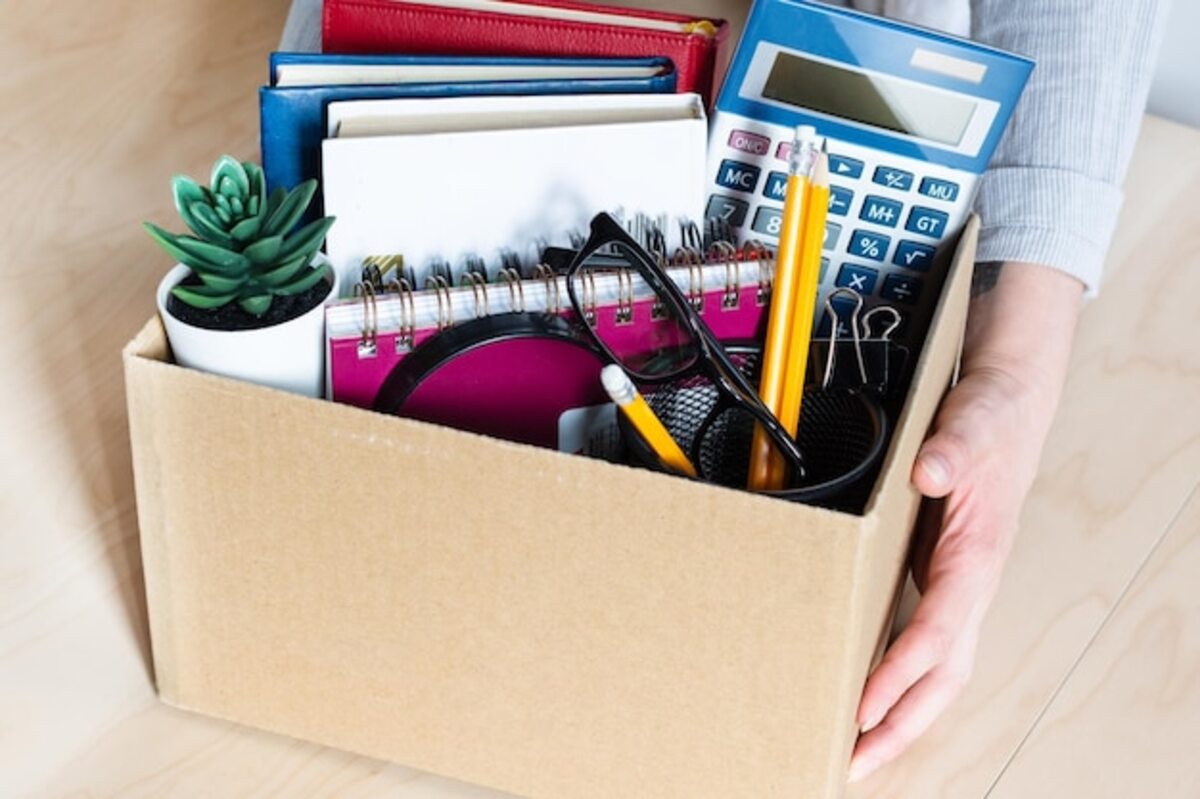How to create a moving plan tailored to your personal needs

Creating a moving plan tailored to your personal needs is the key to transforming what could be a chaotic process into an organized and stress-free experience. In this article, I will guide you through the essential steps to design a plan that fits your lifestyle and preferences. From defining your priorities to choosing the best date, here you will find practical tips that will ease every stage of your move, ensuring that everything goes as planned and without setbacks.
1. Define your priorities: What is the most important thing in your move?
When starting the moving process, it is essential to define your priorities. Ask yourself what aspects are most important to you: is it the location of your new home, the proximity to your work, the quality of schools in the area, or perhaps having outdoor spaces? Determining what your essential needs are will allow you to focus your efforts and make decisions more aligned with what you truly value. Creating a list of these priorities will not only help you select the right place, but will also serve as a guide throughout the entire moving process.
Additionally, consider logistical aspects that may influence your experience. For example, if you have pets or small children, planning their relocation and adaptation to the new environment may be crucial. It is also important to assess whether you need professional help to pack and move your belongings or if you prefer to do it yourself to save costs. By identifying what is essential and what can be flexible in your move, you can create a more effective and personalized plan that reduces stress and maximizes satisfaction in this new chapter of your life.
2. Set a realistic schedule: How to organize time effectively.
Establishing a realistic timeline is essential for a successful move. Start by identifying key dates, such as the moving day and any deadlines associated with the delivery or closing of your new home. From there, break down the tasks into manageable steps, assigning specific times for each activity, such as packing rooms, hiring moving services, or changing your mailing address. A visual calendar can be very helpful; whether digital or on paper, it will give you a clear view of the available time and the deadlines you need to meet. Remember that being flexible with your timeline will allow you to adapt to unforeseen events without causing additional stress.
Also, consider your personal and work commitments when establishing this schedule. If you have a demanding job or family responsibilities that require daily attention, make sure not to overload your days with too many moving-related tasks. Instead, schedule specific times during the week to focus exclusively on organizing and packing. This will not only make the process more manageable but also allow you to maintain a healthy balance between your obligations and your personal life. By the end of the process, you will have a clear roadmap that will facilitate a smooth transition to your new home.
3. Take inventory: The importance of knowing what to bring and what to leave behind.
Making an inventory of your belongings is a crucial step in the moving process that is often overlooked. By having a detailed list of the items you own, you will not only be able to determine what to take with you to your new home, but it will also help you identify those items that you no longer need or that could be donated, sold, or recycled. This exercise not only facilitates the logistics of the move by reducing the number of things to pack and transport, but it can also free you from the emotional weight associated with unnecessary objects, allowing you to start this new chapter with a lighter and more organized space. Furthermore, a well-done inventory can be essential for insuring your belongings during transport. By having a clear list of what you are taking with you, you will be able to verify the arrival of each item at your new home and facilitate any claims in case of loss or damage. It will also help you know the total value of your assets, which is useful for insurance purposes. In summary, making an inventory not only optimizes your move from a practical standpoint, but it also provides you with peace of mind knowing exactly what you own and how you are going to manage it in this new phase.
4. Budget: How to calculate the expenses involved in the move.
Calculating the budget for a move is a fundamental step that will give you a clear view of the expenses involved. Start by identifying direct costs, such as renting a moving truck or hiring a specialized company. Be sure to compare prices and services offered, as this can vary considerably between different providers. Additionally, don't forget to include extra expenses like fuel, tolls, and insurance, which can impact the final cost. Creating a detailed list will help you avoid surprises and plan more accurately.
In addition to direct costs, consider other indirect expenses that may arise during the move. For example, if you decide to buy packing materials such as boxes, tape, and bubble wrap to protect your belongings, make sure to include these items in your budget. It is also crucial to take into account potential fees for temporary storage if you cannot move all your belongings to your new home right away. By adding all these factors together and establishing an additional margin for unforeseen circumstances, you will be able to create a realistic budget that allows you to carry out your move without compromising your personal finances.
5. Choose the moving method: DIY vs hiring professionals.
When it comes to moving, one of the most crucial decisions is choosing between doing it yourself (DIY) or hiring professionals. Opting for a DIY approach may seem appealing, especially if you have a tight budget and like the idea of having total control over the process. Packing your belongings, renting a van, and doing the manual work can be a rewarding experience, as well as allowing you to customize every detail of the move. However, it is essential to consider the time and energy this option will require, as well as the possibility of facing unforeseen issues that could complicate the process even further. On the other hand, hiring professionals for your move can offer you peace of mind and efficiency. Moving experts have the necessary experience to handle heavy loads, properly pack fragile items, and optimize space in their vehicle. While this option may involve an additional cost, the benefits can quickly outweigh the drawbacks when you consider the time and effort saved. When evaluating which method best suits your personal needs, also think about factors such as the distance of the move, the amount of belongings you have, and your ability to handle stressful situations. The key is to find the balance that allows for a smooth transition to your new home.
6. Efficient packing: Strategies for packing quickly and safely.
Packing efficiently is essential to stay calm during the moving process. To begin, organize your belongings into categories and use appropriate packing materials, such as sturdy boxes, bubble wrap, and tape. An effective strategy is to label each box with its contents and the room it belongs to; this will not only make the unpacking process easier in your new home but also provide you with a visual inventory of your belongings. Additionally, consider using smart stacking techniques to maximize space in the boxes and reduce the risk of damage.
Another useful technique is to pack room by room, which will allow you to focus on one area at a time without feeling overwhelmed. Start with the least used rooms and save the essential items for last. If you have limited time, set a schedule that breaks the work into short but productive sessions. Don't forget to include items like tools or cleaning supplies in an accessible spot; this way you can make any necessary adjustments during the move. With these strategies, you will achieve a quick and secure packing that will make your transition much smoother.
7. Important notifications: Who to inform about your change of address.
One of the most important parts of a change of address is ensuring that all relevant people and entities are aware of your new location. This includes, first and foremost, utilities such as electricity, water, and gas, which must be notified to avoid service interruptions. It is also essential to inform your internet and cable television provider about your move, as they can offer you specific options to ensure a smooth transition. By doing this in advance, you can coordinate dates and avoid any inconvenience.
In addition to basic services, there are other significant contacts you should not forget. Make sure to notify your bank and other financial institutions about your change of address; this is not only crucial for keeping your records updated but also for preventing issues related to security and the management of your accounts. Don’t forget to update your information on insurance (health, home, car) and any subscriptions or memberships you may have. An organized list will help you manage these notifications stress-free during the move, ensuring that everyone is informed and you are completely settled in your new home.
8. Adaptation to the new home: Tips for a smooth transition upon arriving at your destination.
Adapting to a new home can be both exciting and challenging. To facilitate this transition, it is essential to establish a routine from day one. Start by unpacking the essential boxes that contain your most necessary belongings, such as clothes, kitchen utensils, and personal hygiene items. As you organize your spaces, take the time to familiarize yourself with your new environment. Take a tour of the house and discover every corner; this will not only help you feel more comfortable but will also allow you to find practical solutions for the arrangement of your furniture and decorations.
In addition to organizing your physical space, it's important to take care of your emotional well-being during this period of change. Maintain a positive attitude and be patient with yourself as you adapt. Connecting with neighbors and exploring the community can be a great way to integrate into your new home. Participate in local activities or join groups that share your interests; these interactions can help you build new friendships and create a sense of belonging. Remember that every move brings the opportunity to start a new chapter in your life, so take advantage of every moment to enjoy the process and make this place truly special.
9. Reflect on the experience: Learning from the moving process for future occasions.
Reflecting on the moving experience is a crucial step that is often overlooked. Every move, whether big or small, offers valuable lessons that can help you improve your future experiences. Take some time to think about what went well and what could have been handled differently. Was there any aspect of the process that caused you unnecessary stress? What organizational strategies turned out to be most effective? By identifying these points, you can adjust your approach to future moves, making each one smoother and less overwhelming.
Additionally, sharing your reflections with friends or family members who have also gone through the process can offer you new perspectives and useful advice. You might discover innovative techniques from others who have faced similar situations. Consider keeping a journal or even recording a short video where you document your experience; this will not only serve as a personal reference for the future but also as a source of inspiration for those around you. Learning from the process not only improves your organizational skills but also transforms the move into an opportunity to grow and adapt to change.



